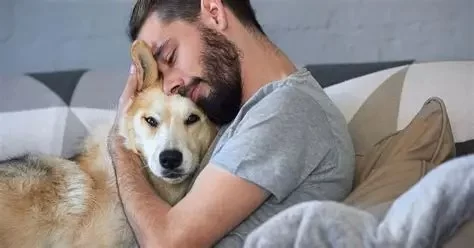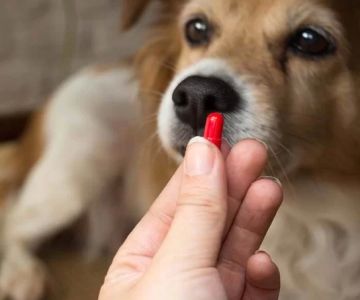Understanding Pet Anxiety After a Stressful Event
Many pet owners have witnessed their furry companions react with fear and anxiety after experiencing a stressful event. Whether it's a trip to the vet, a move to a new home, loud fireworks, or a visit to the groomer, pets often face stressful situations that can cause lasting anxiety. As a pet owner, it’s natural to wonder: how long does pet anxiety last after a stressful event? In this article, we'll explore the factors that affect the duration of anxiety in pets and offer solutions for helping them recover.
1. What Causes Anxiety in Pets?
Before diving into the specifics of how long anxiety lasts, it’s important to understand the factors that contribute to anxiety in pets. While cats and dogs experience anxiety differently, common triggers include:
- Separation Anxiety: Many pets experience anxiety when left alone, particularly those who have developed strong attachments to their owners.
- Traveling or Relocation: Long car rides or a move to a new home can be overwhelming for pets, especially those not accustomed to new environments.
- Loud Noises: Fireworks, thunderstorms, and other loud noises can trigger fear in pets.
- Changes in Routine: Pets thrive on routine, and disruptions—such as changes in feeding schedules, daily walks, or unfamiliar people entering the home—can contribute to stress.
Understanding what causes anxiety is the first step in addressing and managing it, as each pet may react differently to these stressors.
2. How Long Does Pet Anxiety Last After a Stressful Event?
The duration of pet anxiety largely depends on the severity of the stressful event, the individual pet’s temperament, and how the pet’s anxiety is managed. Typically, pet anxiety can last anywhere from a few hours to several days, depending on the situation.
For example, a trip to the vet for a routine check-up may cause anxiety that lasts for a few hours or until the pet returns to their familiar environment. On the other hand, events such as moving to a new home, experiencing a traumatic injury, or being left alone for extended periods can lead to longer-lasting anxiety that may persist for days or even weeks.
3. Signs Your Pet is Feeling Anxious
As pet owners, it’s crucial to recognize the signs of anxiety in our pets so that we can address the issue early on. Common signs that a pet may be experiencing anxiety include:
- Excessive Barking or Meowing: Pets may vocalize more than usual when they are anxious.
- Destructive Behavior: Chewing furniture, scratching, or attempting to escape can all be signs of anxiety.
- Restlessness or Pacing: A pet that cannot sit still may be feeling anxious.
- Loss of Appetite: Anxiety can cause pets to lose interest in food and treats.
- Hiding or Seeking Seclusion: Pets that are anxious may retreat to quiet areas or hide in an attempt to feel safe.
Being mindful of these signs will allow you to gauge your pet's level of anxiety and take the appropriate steps to help them feel more comfortable.
4. How to Help Your Pet Recover From Anxiety
While the duration of pet anxiety can vary, there are effective strategies you can use to help your pet recover more quickly and feel secure again. Here are some tips for managing anxiety in pets:
- Create a Safe Space: Give your pet a quiet, comfortable area to retreat to when feeling overwhelmed. This could be a crate, a specific room, or a cozy bed in a peaceful corner.
- Maintain a Routine: Pets feel more secure when their daily routine is consistent. Try to maintain regular feeding times, walks, and playtime to offer a sense of stability.
- Provide Comforting Scents: Using calming scents, such as lavender or pheromone diffusers, can help ease anxiety in pets. Some products are specifically designed to create a soothing environment for anxious pets.
- Exercise and Play: Engaging your pet in physical activity and interactive play can help reduce stress and keep them distracted from their anxiety.
- Consult a Veterinarian: If your pet’s anxiety persists or worsens, it’s important to consult a veterinarian. They may recommend medication, therapy, or other interventions to help alleviate anxiety.
Managing anxiety in pets often requires a combination of techniques. With patience and consistency, you can help your pet feel more secure and less anxious over time.
5. The Role of Medication in Managing Pet Anxiety
In some cases, anxiety may be severe enough to require medication to help manage the symptoms. Your veterinarian can prescribe anti-anxiety medication, which may be used temporarily during particularly stressful events (such as travel or a move) or for long-term anxiety management.
It's important to remember that medication should always be used under the guidance of a veterinary professional. Medications alone cannot solve the root causes of anxiety, but they can be part of a comprehensive treatment plan that includes behavioral modifications and environmental changes.
6. Real-Life Example: A Journey to Overcoming Pet Anxiety
Consider the story of Max, a rescue dog who struggled with separation anxiety after being adopted. Max would bark incessantly, chew furniture, and show signs of distress whenever his owner left the house. After consulting with a veterinarian, Max’s owner created a calming routine that included a designated quiet space, daily exercise, and the use of calming pheromone sprays. Over time, Max's anxiety improved significantly, and his behavior became much more manageable.
This example shows that with the right interventions and consistent effort, pets can overcome anxiety and return to their normal, happy selves. Each pet is unique, but there is hope for improvement with the right care.
If you are struggling with managing your pet’s anxiety, or if you need advice on helping your pet feel safe and secure after a stressful event, visit Hidden Brook Veterinary for expert guidance and personalized care recommendations.












